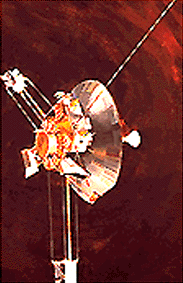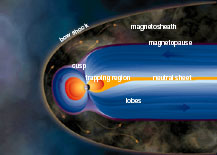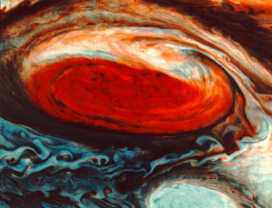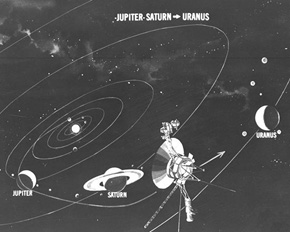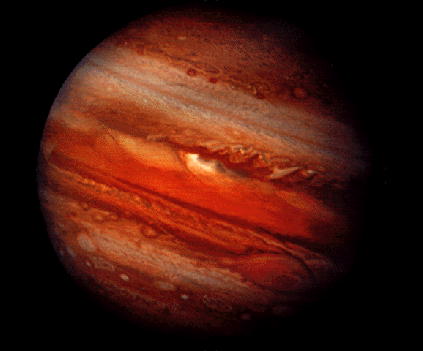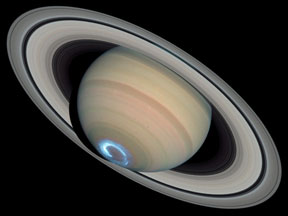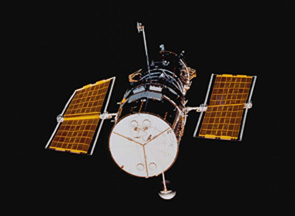Pioneer
The Pioneer missions were designed to study our Sun's environment and the planets. Although some of the launches failed, the Pioneer program can still be considered a success.
Pioneer 1 was launched in 1958 and Pioneer 13 was launched in 1978. So, you can see that the Pioneer program spanned many years.The early Pioneer missions had a focus of studying the near-Earth environment and the Moon. These missions looked at radiation, magnetic fields, cosmic rays and micrometeorites in the vicinity of the Earth and Moon. Later missions looked farther than the Earth and the Moon.
Pioneer 10, launched in 1972, was very different from the previous Pioneer missions. It was the first spacecraft to pass through the Asteroid Belt and the first spacecraft to take close-up pictures of Jupiter. This Pioneer mission technically ended on March 31, 1997. Its weak signal is still tracked though. Pioneer 10 is headed in the direction of the constellation Taurus. It will take over 2 million years for Pioneer to pass one of the stars of Taurus!
The Pioneer 11 spacecraft was launched a year later and used a gravity assist from Jupiter to visit Saturn. It returned detailed pictures of Jupiter's Great Red Spot, the first close-up photographs of Saturn and its rings, and information that Titan is too cold to support life. The Pioneer 11 mission ended on September 20, 1995. It hasn't been heard from since that day! Pioneer 11 is headed toward the constellation Aquila.
The Pioneer missions carry a gold plaque with a graphic message in case extraterrestrial life were ever to find the spacecraft.
Pioneer 12 & 13 were considered part of a project called Pioneer Venus. Pioneer 12 was launched in May 1978. It consisted of an orbiter. Pioneer 13 was launched in August 1978 and consisted of 3 small probes and 1 large probe. Pioneer 12 used radar to map the planet's surface, while Pioneer 13 deployed its four probes that were carried through the Venutian atmosphere by parachutes. The spacecrafts found evidence of lightning, atmospheric composition changes, and distinct differences in atmosphere layers. Pioneer 12 orbited Venus for 14 years until it entered the atmosphere of Venus in 1992 and was destroyed.


